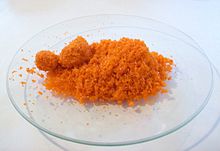WikiChemists and Chemical Abstracts announce collaboration

Chemicals – love 'em or hate 'em, but you couldn't live without 'em. Water, glucose and sodium chloride are pretty essential for all of us. Other chemicals make our clothes, or colour them, or provide jobs for millions of workers. Still more chemicals (sometimes the same ones as before) can do us some pretty nasty harm if we're not careful, or degrade the environment for our children and grandchildren. Some chemicals are only really of interest to a professional chemist, or to someone who is easily amused by silly names – arsole, moronic acid and vomitoxin all have Wikipedia articles, after all. But information about chemical compounds is big business, worth several billions of U.S. dollars annually worldwide, and the Chemical Abstracts Service (CAS, a division of the American Chemical Society) is a leading player, "the global leader" as they prefer to put it!
But if there's something interesting that can be said about a chemical, then sooner or later someone is going to write an article about it… That's why the Chemicals WikiProject slaves away at over five thousand articles about individual chemical compounds (nearly double that number if you count all the drugs), trying to improve the content that we have and to fill in any obvious gaps in our coverage. Five to ten thousand compounds is pretty small compared to other collections of chemical information (CAS boasts 46 million compounds) but, as in many other areas, Wikipedia stands out because of its slightly idiosyncratic choice of subject matter. Free-access databases such as ChemSpider have millions of entries but, as its CEO Antony Williams told us, "for some of those compounds, Wikipedia is the only accessible online source of data."

